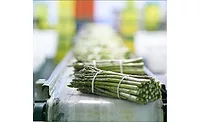Engineering
Three ways production engineers can prioritize problems
Whether you make widgets or food, you have to balance maintenance and production to get high-quality products out the door

Production engineers have two competing priorities throughout the year. One is to support the maintenance engineering department, and the other is to integrate new products into the plant and packaging line. This kind of segmented planning can be very confusing and often puts production engineers in a bind. How can they organize these competing tasks to achieve a more effective workflow?
In my experience as director of product planning at Videojet, I have found that data drives sound decision-making and helps prioritize problems and daily workload. The data found in the plant and on the packaging line provides a bigger picture as to what is going on, allowing the production engineer to easily identify what needs to be done to support maintenance. There are three main ways production engineers can prioritize problems: Sorting measurements, considering safety planning and quantifying soft costs.
Sort your measurements
At Videojet, we ask production engineers to look at a Pareto chart to sort the data and determine what needs to be done first and prioritize the actionable items. The purpose of the Pareto chart is to highlight the most important items among a typically large set of factors. It contains both bars and lines on the same graph, and the point of the visual is to make it easy to digest what should be done first.
While at first glance, the solution may appear to be quite simple (just tackle the biggest bars on the Pareto chart), production engineers need to figure out how to sort them to decide what exactly matters most. Do they sort by incident? By minutes of downtime? Another measure? Often, they need to dig deeper to better determine their priorities.
Let’s take downtime as an example. A plant can have events, such as micro-stops, that happen 100 times but only cause 30 seconds of total downtime. They can also have an event like an equipment failure that occurs once a month and wastes a total of one hour. None of this is easily visible on a Pareto, and oftentimes needs support of real-time data through a productivity solution to better determine what is actually happening.
But it doesn’t end there: Production engineers must also think about reject rates and false rejects. Time is wasted if a product is bad, but it’s also wasted if the system thinks it’s bad and rejects it in error. In both instances, this could mean having to significantly rework or scrap a product, wasting time and costing the company money.
Safety planning while turning a profit
Aside from sorting measurements, safety planning is also a concern. Plant managers and employees would agree that safety comes first, but when we look at safety issues, especially as part of a failure mode effect analysis (FMAE), we can conceive of a number of ways the line can fail and become unsafe. It’s an endless cycle and could eat all of a production engineer’s time if they can’t create a better way to identify safety concerns.
To account for this, production engineers need to assess their plant’s risks, thinking in advance about safety improvements that must be made. At the same time, they must always keep costs in mind. Production can’t afford to become unprofitable, but it also can’t afford to be unsafe. Much like the rest of the job, it’s a delicate balance.
That’s why production engineers need to learn to quantify soft costs, as follows.
Learn to quantify soft costs
When I’m looking to impact the overall business, I quantify the soft costs. I suggest that plant managers—especially those who work at smaller plants—improve the process, quantifying the soft costs as well. They must account for soft costs such as risk, safety, bad products and labor.
I know that many big plants have implemented time studies to determine whether labor should be treated as a hard cost rather than a soft cost. However, smaller factories don’t necessarily have the time or resources to do this. As a result, small plants may not know what their labor truly costs. Production engineers are caught in the middle and end up mismanaging their list of problems and priorities. They can’t help it; if the data is bad, or non-existent, their work won’t be as effective.
How can production engineers fix this? They’ll need to rely on their Gemba walk skills and sharpen their eye for problems. The term “Gemba walk” comes from the Japanese word “gembutsu,” meaning “real thing.” On Gemba walks, production engineers walk the facility and see with their own eyes how the line and employees work. It helps them better identify problems or issues with the line when they can see things with their own two eyes.
When plant engineers do a Gemba walk, they need to notice problems early, ask why they’re happening, quantify them, and fix them. Think of these walks as an opportunity to observe how your systems function, and communicate with your operators to learn more about their day-to-day tasks and issues they face while working on the line.
Production engineers can also rely on real-time data to help them determine whether a line’s performance is in line with projections and discover underlying issues or root cause of line stoppages. This too, should help quantify soft costs.
A production engineer has to balance many priorities, such as ensuring that the plant is running smoothly while also focusing on safety, line productivity, new product innovation and rollout. Therefore, it’s imperative for production engineers to utilize a Pareto chart and deep dive into the data to better understand issues on the packaging line. It will make it easier for them to prioritize their workloads and make decisions quickly. Remember: Bad data can lead to bad charts and ineffective work; with great data and thoughtfully planned implementation, you increase the odds of effective production and a safe, profitable plant.
About the author
Jessica Wettstein is the director of product planning at Videojet Technologies where she oversees a global team responsible for defining the future of Videojet’s marking and coding products. Her role is crucial in uncovering customers’ unspoken needs and key pain points across their packaging lines and turning these insights into a winning product portfolio. Prior to her experience at Videojet, she worked as a product manager and firmware engineer at Zebra Technologies. She has a Bachelor of Science degree in Computer Engineering from University of Wisconsin-Madison and a MBA in Marketing from Northwestern University.
Looking for a reprint of this article?
From high-res PDFs to custom plaques, order your copy today!






